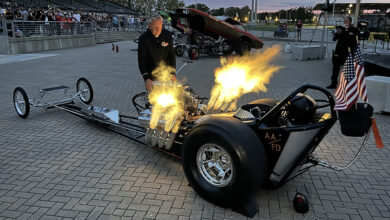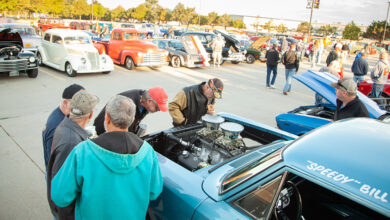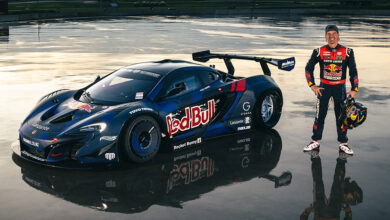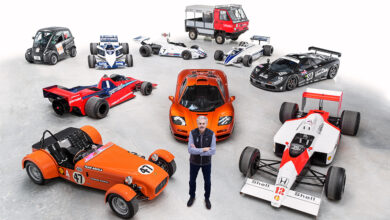From the Mag: SEMA Show Beginnings – Part II
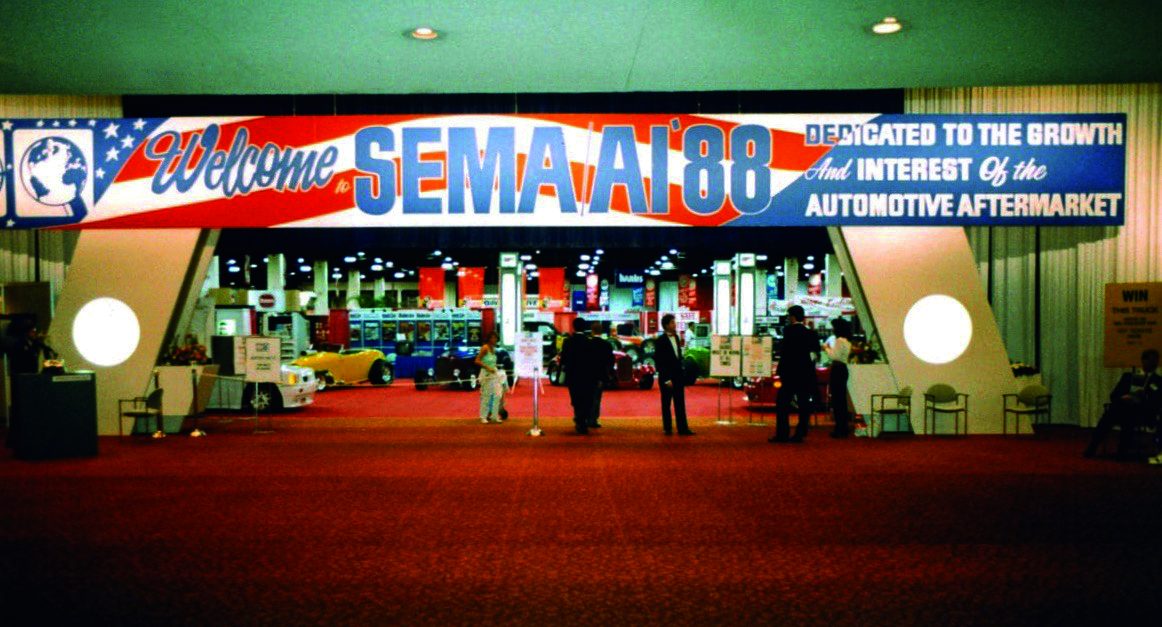
This is the second in a two-part series, appearing in the December 2021 issue of THE SHOP Magazine, examining the formation and development of the SEMA Show from its beginning until the Mid-1990s. Part I appeared in the November 2021 issue of THE SHOP Magazine. Read Part I here.
By the 1980s, the SEMA Show was growing each year. At the time, Chuck Blum, SEMA president, noted that the show was growing by 25% each year. In 1982, the SEMA organization took over full control of the show from Robert E. Petersen.
More to See
By 1983, the SEMA Show had further broadened its scope with the addition of the emerging import car market. The event was now called the SEMA/AI Show as a result of joining forces with sister organization Automotive International Association. In 1984, the name was changed again, this time to the SEMA/AI/APAA Show thanks to the added participation of the Automotive Parts & Accessories Association.
No matter the name, the show was becoming known as the national showcase of the industry’s latest parts, components and accessories, as well as for offering a sampling of the latest innovations from the Detroit auto manufacturers.
During this time, car show promoter Bob Larivee was observing the automotive art world and recognized that most automotive fine artists were focused mainly on classic and antique cars. Larivee convinced organizers to add a Hot Rod Heritage Fine Art Exhibit to the 1986 SEMA Show.
Everything in its Place
Along with the 1988 show came the idea of sectionalization. To make it easier for show visitors to ensure they could see everything in the popular category that revolved around street rods, all the exhibitors that catered to that market got their own area on the show floor, called the Street Rod Equipment area, these days known as Hot Rod Alley.
The show floor was so busy at the SEMA/AI Show in 1988 that various exhibitors reported afterwards that staff members couldn’t even find time to take scheduled food breaks. That year saw buyers attend from 52 countries, and the following year the show expanded to the point where it took up the entire Las Vegas Convention Center complex and nearly 1 million square feet of space.
Wrapping Up with the Mid-‘90s
By 1992, SEMA has joined with other aftermarket organizations into a single comprehensive trade show experience known as Automotive Aftermarket Industry Week. Incorporating the traditional automotive aftermarket, the collision repair industry and related segments, AAIW established itself as a key worldwide automotive event, and even expanded beyond the LVCC borders to the Sands Expo center and other resort exhibit halls over the years.
Without question, the SEMA Show made its mark by offering excitement, along with new products, industry celebrities, incredible project cars and so much more. It was, and is, simply the place to be if you are associated with the industry at any level.
